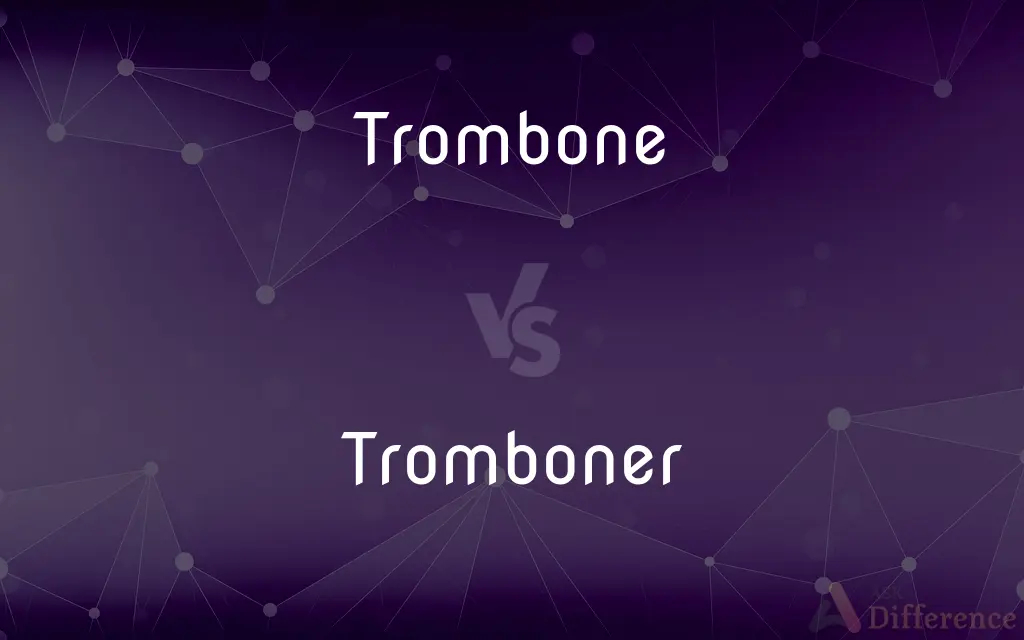Trombone vs. Tromboner — What's the Difference?

Difference Between Trombone and Tromboner
ADVERTISEMENT
Compare with Definitions
Trombone
The trombone is a musical instrument in the brass family. As with all brass instruments, sound is produced when the player's vibrating lips (embouchure) cause the air column inside the instrument to vibrate.
Tromboner
(nonstandard) A person who plays a trombone.
Trombone
A large brass wind instrument with straight tubing in three sections, ending in a bell over the player's left shoulder, different fundamental notes being made using a forward-pointing extendable slide.
Trombone
A brass instrument consisting of a long cylindrical tube bent upon itself twice, ending in a bell-shaped mouth, and having a movable U-shaped slide for producing different pitches.
Trombone
A musical instrument in the brass family, having a cylindrical bore, and usually a sliding tube (but sometimes piston valves, and rarely both). Most often refers to the tenor trombone, which is the most common type of trombone and has a fundamental tone of B♭ˌ (contra B♭).
Jim plays the trombone very well.
This trombone is very expensive.
ADVERTISEMENT
Trombone
The common European bittern.
Trombone
A kind of extendable support for attaching lighting elements to a set.
Trombone
(telecommunications) To transmit a signal or data back to a central switching point before sending it out to its destination.
Trombone
To extend and retract (the zoom lens); to use it too enthusiastically.
Trombone
A powerful brass instrument of the trumpet kind, thought by some to be the ancient sackbut, consisting of a tube in three parts, bent twice upon itself and ending in a bell. The middle part, bent double, slips into the outer parts, as in a telescope, so that by change of the vibrating length any tone within the compass of the instrument (which may be bass or tenor or alto or even, in rare instances, soprano) is commanded. It is the only member of the family of wind instruments whose scale, both diatonic and chromatic, is complete without the aid of keys or pistons, and which can slide from note to note as smoothly as the human voice or a violin. Softly blown, it has a rich and mellow sound, which becomes harsh and blatant when the tones are forced; used with discretion, its effect is often solemn and majestic.
Trombone
The common European bittern.
Trombone
A brass instrument consisting of a long tube whose length can be varied by a U-shaped slide
Share Your Discovery

Previous Comparison
Agnostic vs. Atheist
Next Comparison
Incredible vs. Incredulous














































